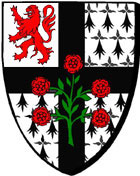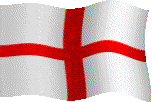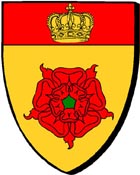
Encyclopédie Marikavel-Jean-Claude-EVEN/Encyclopaedia/Enciclopedia/Enzyklopädie/egkuklopaideia
 |
|||

England Bro-Saoz |
|

Hampshire |
|
Wight Vectis Insula |
| pajenn bet digoret e 2002 | page ouverte en 2002 |
* forum du site Marikavel : Academia Celtica |
dernière mise à jour 15/07/2025 15:33:45 |
![]()
A B C D E F G H I J K L M N O P Q R S T U V W X Y Z a b c d e f g h i j k l m n o p q r s t u v w x y z
|
Définition / Displegadur : Île du sud de l'Angleterre; comté de Hampshire. Ville principale : Newport. Bordée au sud par la Manche, à l'est et à l'ouest par les deux bras de l'estuaire de la rivière Test, et celui de l'ouest est nommé localement : the Solent. Superficie : 381 km2 Population : 33000 h en 1863; 98000 h en 1979. Site archéologique : fort romain de Carisbrooke. |
|
![]()
|
o
Extrait de Google-Earth |
![]()
|
o
Extrait de British Museum : Stone Age Antiquities Wight est figurée par les pointillés au sud de la rivière Solent. |
![]()
|
Extrait de la carte Ordnance Survey : Map of Roman Britain. |
![]()
|
Histoire / Istor : L'île Vectis a été investie par les forces romaines, probablement celles de la Legio II Augusta sous les ordres du général Vespasien, peu après 43-44 après J-C. C'est également dans ces parages qu'a eu lieu la confrontation entre les éléments de la Classis Britannica, aux ordres d'Allectus, et l'aile ouest de la marine impériale du césar (vice-empereur) Constance Chlore, commandée par l'amiral Asclepiodotus. (voir notre page Histoire nationale des Bretons ...). L'île de Wight est tombée sous la coupe des West-Saxons en 530, selon la Chronique anglo-saxonne : " In this year Cerdic and Cynric obtained possession of the isle of Wight and slew e few men at Wihtgaraesburh".. 'Cette année là, Cerdic et Cynric s'emparèrent de l'île de Wight, et massacrèrent plusieurs hommes à Withgaraesburh". |
![]()
|
Étymologie / Gerdarzh : * Rivet & Smith, Place-Names of Roman Britain, p 487, 488, 489 : - Diodore de Sicile, V,22 : Iktin ( = ICTIM); - Pline l'Ancien, NH, IV,103 : VECTIS; - ibid , IV,104 : insulam MICTIM; - Suétone, VIII,4,1 : insulam VECTEM; - Ptolémée, II,3,4 : Ouektis ( = VECTIS); var. Ouiktis ( VICTIS); - I.M, 5092 : VECTA; - Ravenna, 10529 : VECTIS - Panegyric VIII : apud VECTAM insulam; - Eutrope / Paenius : Bekten = BECTEM. " Several problems arise in connection with these sources. There can be little doubt that the correct form is Vectis; this is nominative and singular, its accusative being *Vectim or Vectem. However, first-declension Vecta seems to have existed also, since both IM and the Panegyric have it independently; it is moreover the standard form in Bede, who in seven mentions gives Vectam acc. (I, 3 ; I, 15 ; IV, 13; IV, 16), Vectae gen. (Préface; v, 23) and Vectae dat. (v, 19), and also names the inhabitants as Victuarii, hoc est ea gens quae Vectam tenet insulam (I, 15). Bede's source for this is not known; he knew Pliny, but did not follow him in this instance; he can hardly have known the IM, and there is no evidence that he was acquainted with the Panegyric. Some have held that the Ictis of Diodorus is a separate name, and have identified it with St Michael's Mount (Cornwall). It is likely that Pliny's second mention, Mictim, should also be Ictim (nom. Ictis), its initial M- having arisen scribally by dittography, repeating final -m of insulam, or from a garbled transcription of *Ouiktin of Timaeus. It is true that Pliny seems unconscious of an y duplication, but he is very vague about his first mention of Vectis, placing this with other islands inter Hiberniam ac Britanniam, and for his second mention he specifically says he is following Timaeus who was also the source for Diodorus. We need suppose, then, only one original version of (V)ictis for Vectis, in the Greek of Timaeus. W. Ridgeway in JRS, XIV (1924), 123-36, defending the equation Ictis = Vectis, cited a parallel : Greek Iktoumoulai = Latin Victimulae, among other arguments. There is further support for this from R. Schmittlein in RIO, XVII (1965), 279, and recently from C. F. C. Hawkes in Pytheas : Europe and the Greek Explorers (Oxford, 1977), 29-32. For a contrary view, sec R. Dion in REA, LXXIII (1971), 403, citing a congress paper of 1968. DERIVATION. One may suppose a British name *Uexta (hence Vecta in Latin, the forms in -is then being perhaps influenced by the Latin noun vectis, acc. vectim, on which see below). The best etymology of several that have been suggested is that of Forster ET 118, who sees the name as based on British *uekto-, cognate with Latin vectis 'lever' (and vexo vexare rather than the partial homonym veho vehere, according to Ernout & Meillet) ; a root represented by Irish fecht and Welsh gwaith (fem.), 'turn; time, occasion; course, journey, expédition'. These modem senses leave us still somewhat short of a sense applicable to an island, but Förster quotes an interpretation of the name of Wight in a thirteenth-century MS of Nennius : 'quam Britones insulam Gneid vel Gnitli, quod latine "divorcium " dici potest', noting that Latin divortium is 'fork in a road; watershed', and that British *uekto- could have developed a secondary sense similar to this; R&C add the useful gloss that this being so, the name could refer to the situation of the island in the fork of the Solent'. This may be right, if the unaided eye of carly man could take in so much; possibly it is better to see in the name the idea of 'watershed ', bearing in mind the currents and peculiar tidal habits of the Solent. See GPN 28I-85 for the third category of a large assemblage of names in Vic-, Vict-, Vect- which are probably related to the present name; among places, the closest analogue is perhaps the river Victium near Vercellae in Piedmont (Italy). IDENTIFICATION. The Isle of Wight. Note. Irish Muir n-Icht 'the English Channel' (a name which appears in the Irish Nennius) cannot, it appears, derive from Vectis or Victis — which would have A given *Ficht- but must come from Ictis. This does not mean, however, that we y have to concede Ictis a true separate existence (and support the identification with St Michael's Mount). The obvious suggestion is that Icht derived from a learned tradition in Ireland, not from spoken British forms. All the early names of seas around Britain seem to be learned (Graeco-Latin), not British ones, and can have had no popular currency. The learned tradition in Ireland probably knew (M)lctim in Pliny, just as he was known to Bede. ----------- * A.D. Mills. British Place-Names (1991-2003) Wight, Isle of. "Vectis, c. 150; Wit 1086 (DB). A Celtic name possibly meaning "place of division", referring to its situation between the two arms of the Solent". ----------- Formes bretonnes anciennes : - Nennius : Inis Gueith. - Geoffroy de Monmouth : - Jésus Collège : ***** Commentaires JCE : - sous réserve de vérification : lecture erronée à partir d'une écriture : *M Ictim, dans laquelle le M initial ne serait que l'initiale de Mori, agglutiné à Ictim. ? - On notera le propos émis dans Wikipédia : " Le nom Wight vient du latin Vectis (qui se traduit comme"levier" ou "pince à levier" ou "verrou") à travers l'anglo-saxon Wiht. Il semble que les Romains l'aient conçue comme la clef d'entrée dans la Britannia. Il est certain que plus tard, on l'a vue ainsi". (SIC) Là, il faut reconnaître qu'on est loin des analyses méticuleuses de Rivet & Smith. A défaut d'apporter une analyse raisonnée, il est trop facile de dire "Il est certain que plus tard, on l'a vue ainsi" pour se dédouaner d'une très probable bévue. |
![]()
| Résolution d'une énigme :
Nennius, dans Historia Brittonum, §8, dit, en parlant de l'île de Wight : "Tres magna insulas habet, quarum una vergit contra Armoricas et vocatur Inis Gueith, ...". Traduction anglaise de John Morris : "It (Britain) has three large island. One of them lies towards Armorica, and is called the Isle of Wight; ..." Ce que l'on peut traduire en langue française : "Elle (G. Bretagne) possède trois grandes îles, dont l'une est située face à l'Armorique, et est appelée île de Wight". Cette désignation a surpris de nombreux auteurs qui partaient du postulat de l'identité de l'Armorique avec la Petite Bretagne armoricaine et que cette notion de Wight faisant face à l'Armorique ne pouvait être qu'une erreur par méconnaissance géographique. Cette bévue a été mise en évidence dans l'étude "Genèse de la Bretagne armoricaine", qui démontre le véritable sens du concept gaulois archaïque de l'Armorique, à savoir exclusivement le littoral gaulois de la Manche (< Pare-Mori-Iktios). |
![]()
|
Sources; Bibliographie / Eien; Levrlennadur : * British Museum : Stone Age Antiquities. A Guide to antiquities of Stone age. Third Edition. 1926 * Eilert EKWALL : The Concise Oxford Dictionary of English Place-names. Clarendon Press. Édition 1980. * John MORRIS : Nennius. British History and The Welsh Annals. Phillimore & Co. Ltd. 1980. * ALF RIVET & C. SMITH : Place-names of Roman Britain. Batsford Ltd. London. 1979; Édition 1982. * A.D. MILLS : Dictionary of British Place Names. Oxford University Press.. 1991-2003 |
![]()
|
Liens électroniques des autres sites traitant de l'île de Wight / Vectis Insula : * Lien municipal. Par défaut, celui de Newport, la capitale : Newport (île de Wight) — Wikipédia * Wikipedia français : Île de Wight — Wikipédia * Wikipedia brezhonek : https://br.wikipedia.org/wiki/Enez_Wight * forum du site Marikavel : Academia Celtica * Autres pages de l'encyclopédie Marikavel.org pouvant être liées à la présente : http://marikavel.org/heraldique/bretagne-familles/accueil.htm http://marikavel.org/broceliande/broceliande.htm * solidarité nationale bretonne avec le département de Loire Atlantique : Loire-Atlantique * sauf indication contraire, l'ensemble des blasons figurant sur cette page ont été dessinés par J.C Even, sur bases de GenHerald 5. * Introduction musicale de cette page : Bro Goz Ma Zadoù, hymne national breton, au lien direct : http://limaillet.free.fr/MP3s/BroGoz.mp3 hast buan, ma mignonig, karantez vras am eus evidout go fast, my little friend, I love you very much |
![]()